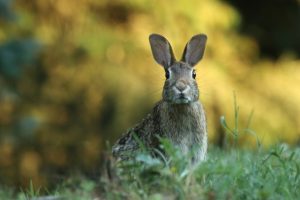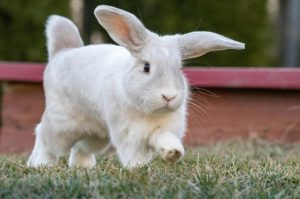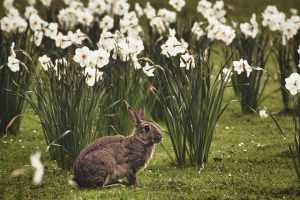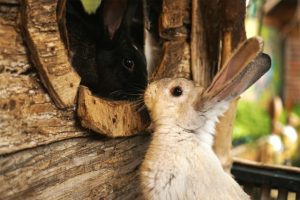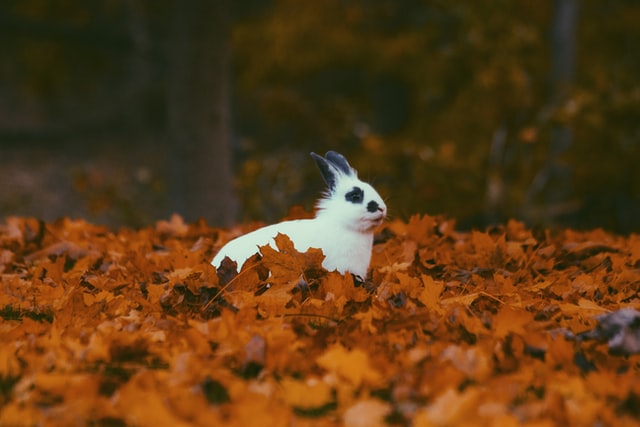
Can you tell who they are? They are cute, fluffy, light in weight, and kind in nature. You guessed correctly; we’re talking about Himalayan rabbits. The Himalayan rabbit breed is easy to handle, making it suitable for people of all ages. They are domestic rabbits who like being socialized and have a pleasant temperament.
If you are new to owning a pet, the Himalayan rabbit is an excellent choice. They enjoy being held and rubbed by their owners; they are not as active as other rabbit breeds, but they still require time outside of their enclosure to play.
Contents
Origin of Himalayan Rabbit
The origin of the Himalayan rabbit breed is unknown. They are not, as the name suggests, from the Himalayan Mountains. However, their evidence is tracked from Asia to the Middle East. They have been known by over 20 different names in different parts of the world. Russian, Chinese, black-nosed, and Egyptian rabbits are some examples. The Himalayan breed became popular in the United States in the early 1900s, and they were used as pets or in shows.
According to the American Rabbit Breeders Association (ARBA), the Himalayan rabbit is the only breed with a cylindrical body. Himalayans have soft white fur with colored spots on the ears, nose, and feet. The Himalayan rabbit has a pure white body as a baby, and the colored patches appear as it grows older. It has soft flyback fur, so when stroked, the fur does not remain upright, instead, it returns to its previous posture. The Himalayan rabbits have red eyes and in some cases pink as well, they weigh around two kg.
Appearance of Himalayan
The Himalayan bunnies come in four distinct colors: black, blue, chocolate, and Lilac. The Himalayan rabbit, which has black markings, was considered one of the first genuine breeds by the American Rabbit Breeders Association (ARBA). That indicates the natural breed is the Himalayan Rabbit with black markings. However, the Himalayas with blue, lilac, and chocolate spots are “man-made.” Except for black, all colors are the result of interbreeding.
The Chocolate Himalayan variation was developed by Ron Smelt, an American breeder from California, United States, in his rabbitry. He crossed the English Spot Rabbit with the original Himalayan Rabbit, resulting in a new Chocolate Himalayan color. Ron Smelt, then combined Blue Himalayan with Chocolate Himalayan to create the Lilac Himalayans.
The color of the Himalayan rabbit’s markings changes slightly depending on the temperature it is exposed to. The cold weather darkens the spots, whereas the warm weather lightens them.
Reproduction of the Himalayan rabbits
The pregnant rabbit’s gestation period lasts 31 days. The litter size of the female rabbit (doe) is 7-8. The newborn rabbits (kits or kittens) are born hairless, with totally shut eyes and ears until 10 days of age. The newborn bunnies begin to wean at the age of four weeks.
Training and space
The Himalayan Rabbit is a friendly and easy-to-handle rabbit breed. The Himalayans are gentle and non-aggressive in temperament, and they like cuddling. It is quite easy to train them, however, litter training may be more difficult. But, you must be patient with your small pet and place the litter box in its enclosure. Keep the litter box clean every day but do not change or replace it; keeping the same litter box every day will help the rabbit become comfortable with it and train faster. You can also use the treat or reward technique for litter training.
Make sure the Himalayans’ enclosure is large enough for them to stretch out, stand up, and move about, as well as having space for a litter box and food.
Grooming and cleaning
Grooming your Himalayan rabbit is crucial to avoid illness and other issues. If the rabbit is unclean, spot clean the dirt with a moist towel and then dry it. Bathing would cause the rabbit to panic due because of water, and they would fall into sudden shock. Bathing can cause skin irritation in rabbits as well.
Rabbits can clean themselves, but you must brush them. If your rabbit has long hair, it should be brushed more frequently to remove extra hair and maintain its skin healthy. Another reason to brush them on a regular basis is that if they swallow too much hair, it might cause gastrointestinal blockage.
Also, take your Himalayan to the doctor or a pet grooming shop to get its ears cleaned and nails trimmed. Also, regularly check their ears for dirt, mites, or infection. Your Himalayan needs time to be alone and enjoy its own company, so the hideout tunnel is a fantastic way for them to hide from your gaze.
Diet for the Himalayan rabbit
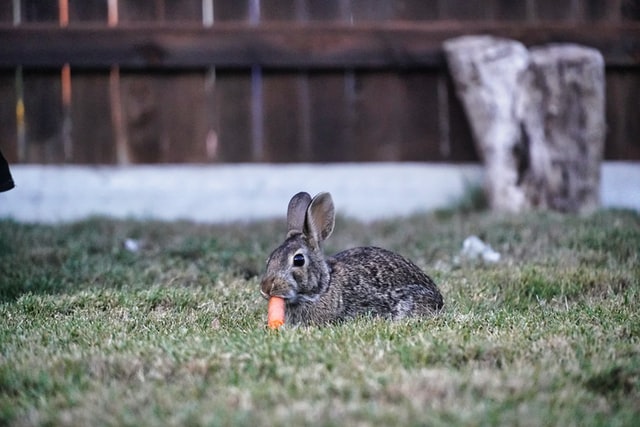
The Himalayan rabbit’s diet should consist of 70% high-quality hay and 30% fruits, vegetables, and leafy greens. Fruits and vegetables should be provided in modest amounts and be sure not to give them a lot of sugar. Fruits must be offered no more than twice a week due to their high sugar content. Keep the Himalayans hydrated and ensure that water is always available in their enclosure. You may avoid the mess by using a non-spill water feeder.
Health issues and disease
The Himalayan rabbit breed is typically thought to have fewer health difficulties, but you must inspect them on a regular basis to see if they are developing any problems. The following are some of the more frequent health problems that the Himalayan rabbit may experience.
Overgrown teeth
Rabbits never stop growing teeth, therefore pay attention to the situation when the rabbit is growing long teeth. When overgrown teeth become too long and pierce the gums or their face, it would be painful and cause difficulty in eating. Take the rabbit to the veterinarian because the overgrown teeth will need to be filed down. As previously stated, rabbit diets should contain at least 70% hay since chewing the hay will naturally fill the rabbit’s teeth and avoid uncomfortable overgrowth.
Flystrike
Flystrike is a potentially fatal problem for rabbits. Flystrike occurs when a fly lays eggs in a rabbit’s skin, and after the eggs hatch, they begin eating the rabbit’s skin. This might be a deadly condition that requires immediate attention. To avoid flystrike, keep the rabbit clean and ensure that its living environment or enclosure is also clean and not wet. Tick and flea repellents can also be used as a preventative measure.
Toys and play
The Himalayan rabbits always want something to play with, otherwise, they would get bored. If the boredom lasts for an extended period, they would become sad and depressed. Depression would lead to illness and health problems. They must always be entertained, whether through interaction or play. They like using golf balls, hardwood logs, and PVC tubing to play with. They like chewing on and playing with a variety of toys.
Make sure they always have something to chew on. To keep your rabbit interested in exploring, try switching out the toys every other day. By rotating the toys, they will never get bored with the old toys. You may let them run around the home freely once they have been litter-trained and you are confident they would not create a mess since they love to jump and hop. Also, ensure that your home is bunny-proofed, which implies that there is nothing unsafe or damaging in the surrounding.
Rabbit proof your house
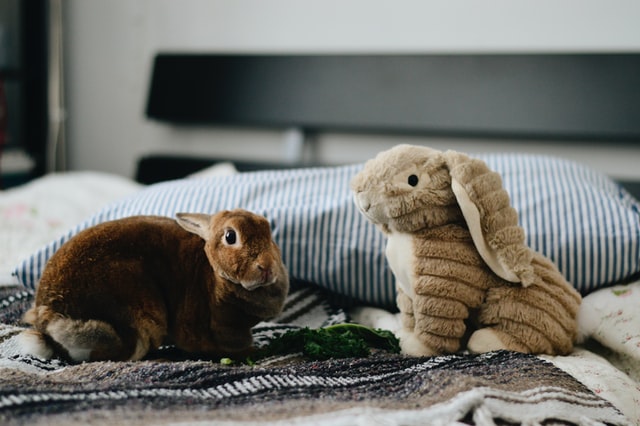
It’s fun to watch your little rabbit run around, but you don’t want the damage it might do. Your rabbit would chew through the wood furniture, wiring, doors, and carpets. They naturally have to chew, which is good for their dental health, so you couldn’t stop them. You may use the bitter apple spray to protect your furniture by spraying it in areas where your rabbit can reach it. Most rabbits dislike the flavor of bitter apple spray.
You can also use cardboard to cover small furniture; you just need to protect the lower portion of your furniture. For example, wrap the cardboard over the legs of your table and chair. The furniture will be protected since the rabbit will nibble on the cardboard rather than the wood. Wrapping around the PVC tube is another excellent technique to protect your upholstery and doors.
Being able to rabbit proof not only involves protecting your objects but also includes being extremely cautious of anything that may hurt your beloved Himalayan. For instance, electric cables, fireplaces, stoves, and toxic house plants. Block the fireplace and keep the rabbit out of the kitchen when the stove is on. Rabbits can harm home plants, so either hang them or put them in another area where your rabbit is not allowed.
Rabbits may jump pretty high, so be sure there is no food on the table when your rabbit is around. If your rabbit discovers an easily diggable area, you can cover it with tiles or a hard plastic mat. The best practice is always to supervise your Himalayan when it is wandering around, it will avoid any damage to your house or harm to your little bunny.
Himalayan Rabbits are social creatures and affectionate animals with a lifespan of 7 to 10 years. They do not require special care, but you must take good care of their nutrition, grooming, and cleanliness in order to maintain their health and avoid any problems.


